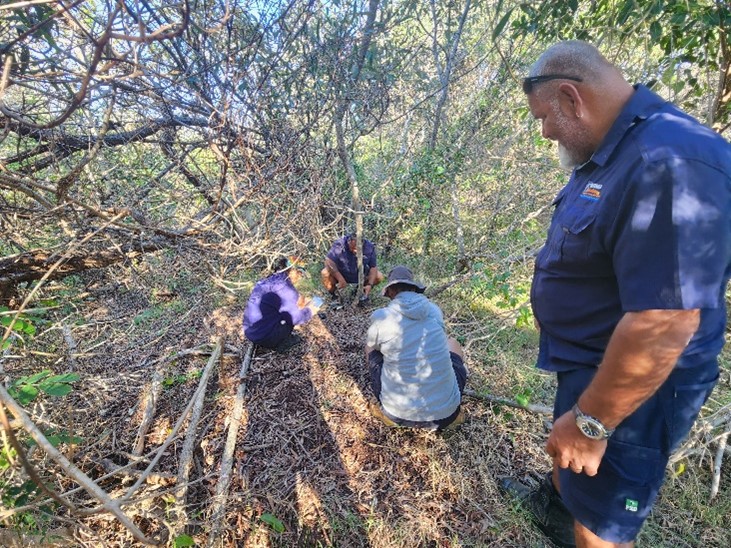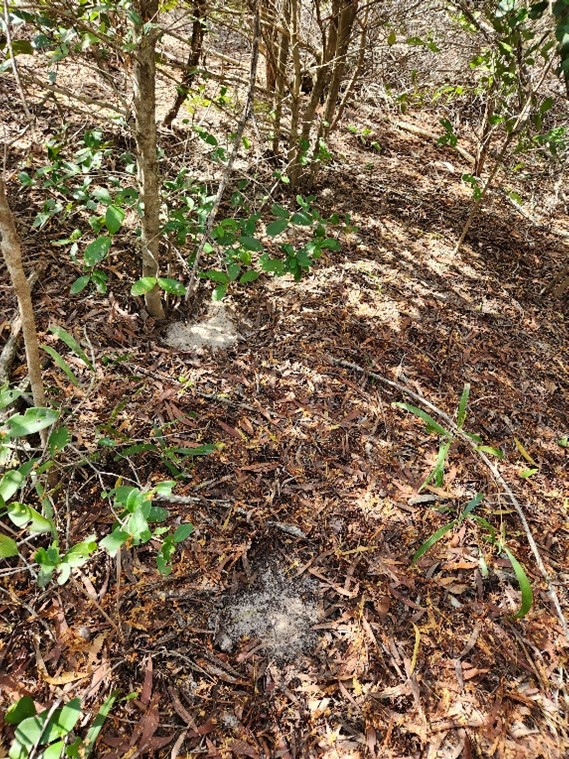Butchulla Rangers conserving Mur’rindum (black-breasted button-quail)


Aims and activities
Mur'rindum, the black-breasted button-quail (BBBQ) is a threatened species of south-east Queensland and northern New South Wales, listed as ‘vulnerable’ both under the Nature Conservation Act 1992 and Environment Protection and Biodiversity Conservation Act 1999.
The Butchulla rangers chose to research this species as previously only limited research had been undertaken on Butchulla Country. The project was also supported by a Community Sustainability Action Grant from the Department of Environment and Science.
Talking to linguists and Butchulla Elders, rangers learned the language name for the BBBQ - Mur'rindum. Rangers also connected with the Threatened Species team at the Queensland Herbarium and PhD student Patrick Webster (University of Queensland) who had data on the Mur'rindum habitat and locations.
The rangers worked with Patrick to identify Mur'rindum habitat, deploying trail cameras and recording data and threats to habitat on Butchulla Country, including K'gari and the mainland from Inskip Recreation Area to Double Island Point. The rangers then completed habitat protection work such as cultural burns to reduce bushfire risk, pest (pig) and weed management. Weed management in the grassy headlands (Indian Heads, Waddy Point and Middle rocks) was completed in late 2023; and a cool mosaic burn was undertaken in early 2024 to burn all 3 sites.
Rangers undertook a further survey on Country, deploying 19 cameras on K'gari. Rangers found evidence of Mur'rindum on the island, with observations of Mur'rindum at one of the sites along with evidence of platelets, which are distinctive dinner-plate sized gaps in the leaf litter created when the bird ‘pivot-feeds’ (pivots in a circle on one leg while scratching away the leaf-litter with their other leg).
During 2024, the rangers continued to monitor and protect identified BBBQ habitat areas. Data from the project has been added to the Butchulla database and is being used to inform cultural and prescribed burn planning.
The rangers were also pleased to see some recovery of the littoral forest Mur'rindum habitat after the impacts from the 2020 Du'ling bushfire, although it may take up to 10 years before these areas can support Mur'rindum again.
Outcomes
This project had varied outcomes including language enhancement, using the Butchulla name, Mur'rindum for the project and the birds themselves.
The rangers developed strong partnerships with the University of Queensland (Patrick Webster) and Fraser Island Natural Integrity Alliance for K’gari (FINIA) (Dr Chris Barnes and Sue Sargent), and improved relationships with neighbouring tribes (Kabi Kabi) for knowledge sharing.
Rangers developed technical skills in survey methodology development and deployment of trail cameras. Rangers captured evidence on camera of additional Mur'rindum habitat sites on Butchulla country, including footage of a male with chicks. They gained confidence in the field and experience in recording data including identifying potential Mur'rindum habitat, identifying and prioritising threats such as weeds and pests (feral cats, foxes and pigs), bushfire risk and habitat change. They gained skills in analysing, storing and using data to inform decision making, such as timing of cultural burns.
The project also resulted in sharing knowledge with the wider community through fact sheets and newsletter articles creating awareness in the wider community.
Learnings and next steps
Butchulla rangers learnt that there is a healthy population of Mur'rindum on Butchulla Country and they will continue to monitor identified areas and protect habitats.
One key finding was an early record of Mur'rindum chicks in August, as breeding usually occurs from September to May. The female mates and lays up to four eggs before leaving the male to incubate the eggs (approximately 14 days) and raise the young. The young are nidifugous (hatched at an advanced state and capable of walking and feeding) and immediately leave the nest and start to forage, but are unable to fly, even short distances, for at least a week.
The lessons from 2022-23 have continued to be of relevance. While the specific project funding has ended, Butchulla rangers will incorporate records into their mapping system and seasonal calendar, informing future fire management of critical habitat for protecting Mur’rindum on K’gari.. Through this research rangers now know that ideally these burns should only take place in June to July each year.

